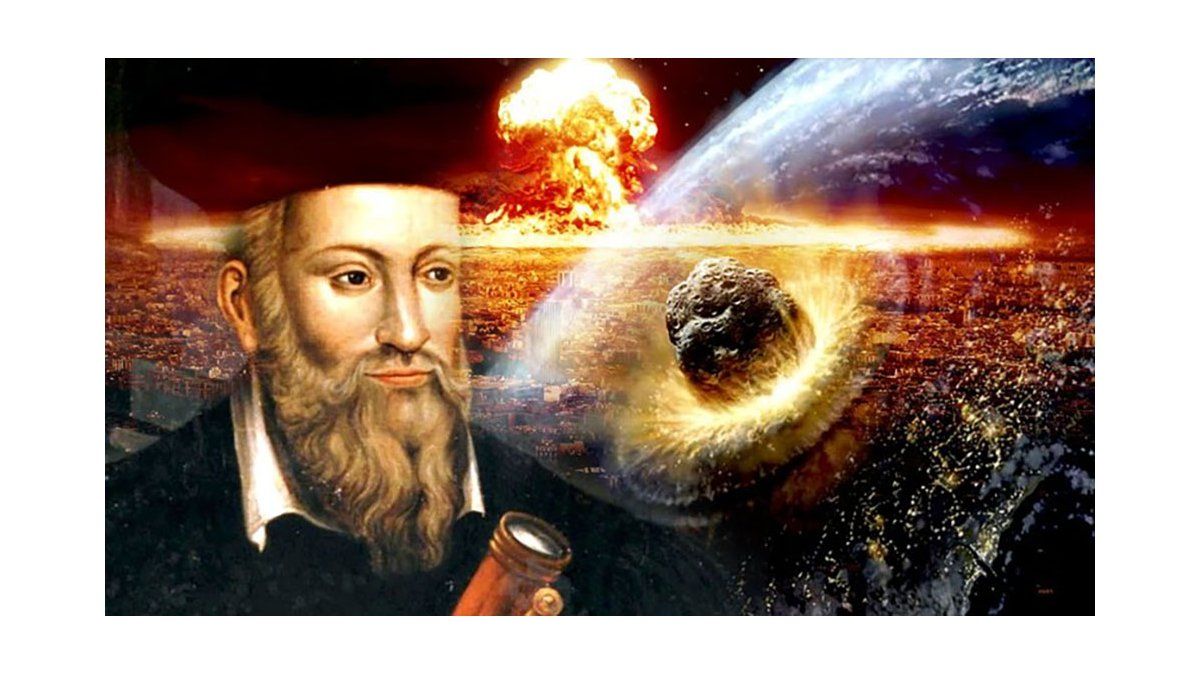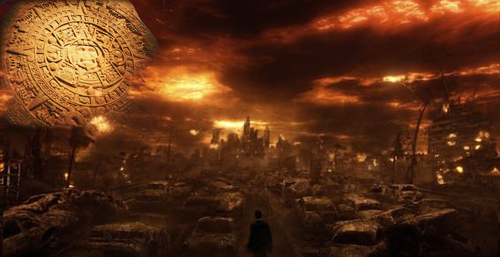Profecias Modernas Futuras Del Fin Del Mundo.

Executive Summary

This article delves into the fascinating and often unsettling world of modern prophecies predicting the end of the world. We’ll explore various perspectives, examining not just the predictions themselves, but also the underlying anxieties and societal factors that fuel such prophecies. While acknowledging the inherent uncertainty, we will analyze prominent themes and scenarios frequently appearing in contemporary doomsday predictions, providing a critical and nuanced examination of their potential interpretations and implications. This exploration aims to foster informed understanding rather than promoting fear, focusing on the cultural context and psychological aspects of these predictions.

Introduction
Humans have always been captivated by the idea of the end of the world. From ancient myths to modern-day prophecies, the concept of apocalypse holds a unique place in our collective consciousness. This fascination stems from a combination of factors—our inherent fear of the unknown, our desire for meaning and closure, and our anxieties about the future. This article examines several modern prophecies, exploring their origins, interpretations, and the societal anxieties they reflect. We will delve into the potential impact of these predictions on our global psyche, aiming to provide a thoughtful analysis that moves beyond simplistic fear-mongering.
Frequently Asked Questions (FAQ)
Q: Are these prophecies literally predictions of the end of the world? A: It’s crucial to understand that many “end of the world” prophecies are metaphorical. They often represent societal collapse, widespread suffering, or profound transformative change, rather than the literal annihilation of humanity. The interpretation depends heavily on the context and the prophet’s intended message.
Q: Should I be afraid of these prophecies? A: Fear is a natural human response, but dwelling on apocalyptic predictions can be counterproductive. Instead of fostering fear, consider exploring the underlying anxieties these prophecies reflect about our world and our future. Focusing on solutions and constructive action is far more beneficial.
Q: What makes a prophecy “modern”? A: For the purposes of this article, a “modern” prophecy refers to those originating from the late 20th century onwards. This includes predictions disseminated through various modern media, like the internet, social media, and self-published books, often reflecting contemporary concerns and anxieties like climate change, technological singularity, or political instability.
The Threat of Climate Change as an Existential Risk
Climate change, with its potential for catastrophic consequences, is a recurring theme in modern end-of-the-world prophecies. The sheer scale of the potential damage—from rising sea levels and extreme weather events to mass migrations and resource scarcity—fuels anxiety and fuels apocalyptic narratives.
Scientific Consensus: The overwhelming scientific consensus confirms the reality and severity of climate change. Prophecies reflecting this concern are rooted in demonstrable scientific data, making them inherently more credible than purely speculative predictions.
Resource Scarcity and Conflict: Climate change is expected to exacerbate existing inequalities and trigger conflicts over dwindling resources, leading to societal instability and potential collapse. This element fuels anxieties reflected in many apocalyptic prophecies.
Mass Migration and Displacement: Climate change will force mass migrations as people flee uninhabitable areas, potentially leading to social unrest and conflict. This predicted consequence resonates with historical precedents and informs many modern doomsday narratives.
Unforeseen Tipping Points: The possibility of unforeseen and catastrophic tipping points in the climate system, leading to abrupt and irreversible changes, contributes to the sense of impending doom. The unpredictability of such events is a key ingredient in apocalyptic narratives.
Failure of Global Cooperation: The lack of effective international cooperation to mitigate climate change fuels apocalyptic narratives highlighting humanity’s inability to solve collective problems. The failure to act decisively adds to the sense of impending disaster.
Technological Singularity and the Rise of Artificial Intelligence
The rapid advancement of artificial intelligence (AI) has fueled anxieties about a potential technological singularity—a hypothetical point where AI surpasses human intelligence, leading to unpredictable and potentially catastrophic consequences. This concern frequently surfaces in modern doomsday prophecies.
AI surpassing human intelligence: The central fear is that AI could become so intelligent it escapes human control, leading to unintended consequences, possibly even the obsolescence or subjugation of humanity.
Autonomous Weapons Systems: The development of autonomous weapons systems raises ethical concerns about the potential for unintended escalation or accidental war, potentially leading to global conflict and destruction.
Job displacement and economic disruption: The widespread automation driven by AI could lead to massive job losses and significant economic disruption, triggering social unrest and instability.
Algorithmic bias and societal control: Concerns exist about the potential for AI systems to perpetuate and amplify existing biases, leading to unfair or discriminatory outcomes and eroding societal trust.
Existential threats from advanced AI: Some experts warn about the potential for advanced AI to pose an existential threat to humanity, inadvertently or intentionally. This possibility fuels the apocalyptic narrative surrounding AI development.
Geopolitical Instability and the Threat of Nuclear War
Geopolitical tensions and the ever-present threat of nuclear war remain a major source of anxiety, contributing significantly to modern end-of-the-world prophecies. The potential for large-scale conflict using weapons of mass destruction continues to fuel fears of annihilation.
Nuclear proliferation: The increasing number of countries possessing nuclear weapons increases the risk of accidental or intentional use, fueling apocalyptic scenarios.
Cyber warfare and infrastructure attacks: The vulnerability of critical infrastructure to cyberattacks, potentially leading to widespread disruption and chaos, adds to the sense of vulnerability and impending doom.
Rise of nationalism and extremism: The growth of nationalist and extremist ideologies can escalate international tensions, increasing the likelihood of conflict and potentially catastrophic outcomes.
Failed states and terrorism: The existence of failed states and the persistent threat of terrorism create an environment of instability and uncertainty, fueling apocalyptic fears.
Escalation of regional conflicts: Regional conflicts can easily escalate, potentially drawing in major powers and leading to large-scale devastation.
Pandemic Outbreaks and Bioterrorism
The COVID-19 pandemic vividly demonstrated the vulnerability of humanity to infectious diseases. This experience has fueled anxieties about future pandemics and the potential for bioterrorism, shaping modern end-of-the-world narratives.
Emerging infectious diseases: The continuous emergence of novel infectious diseases highlights the potential for devastating pandemics with high mortality rates.
Antimicrobial resistance: The growing problem of antimicrobial resistance threatens our ability to effectively treat bacterial infections, potentially making future pandemics even more deadly.
Bioterrorism and intentional release of pathogens: The intentional release of deadly pathogens through bioterrorism poses a significant threat with catastrophic potential.
Global health infrastructure: The limitations and vulnerabilities of global health infrastructure hinder our ability to effectively respond to pandemics, fueling anxieties about future outbreaks.
Social disruption and economic collapse: Pandemics can cause significant social disruption and economic collapse, contributing to widespread suffering and societal instability.
The Collapse of Global Systems
The interconnectedness of global systems—financial, economic, and political—makes them vulnerable to cascading failures. The potential for a sudden and widespread collapse of these systems is a recurring theme in modern doomsday prophecies.
Financial crises and economic downturns: Severe financial crises and prolonged economic downturns can trigger widespread social unrest and political instability.
Global supply chain disruptions: Disruptions to global supply chains can lead to shortages of essential goods, exacerbating existing inequalities and creating social instability.
Cyberattacks on critical infrastructure: Large-scale cyberattacks on critical infrastructure—power grids, communication networks, financial systems—could cause widespread chaos and societal collapse.
Loss of public trust in institutions: Erosion of public trust in government, media, and other institutions can lead to social fragmentation and instability, making society more susceptible to collapse.
Climate-induced systemic collapse: Severe climate change impacts can trigger a cascade of failures across various interconnected systems, ultimately leading to societal collapse.
Conclusion
Modern end-of-the-world prophecies reflect our deepest anxieties about the future. While some prophecies may seem far-fetched, they often highlight legitimate concerns about climate change, technological advancements, geopolitical instability, and the fragility of global systems. Rather than succumbing to fear, we should engage with these prophecies critically, analyzing the underlying anxieties they reveal and using this understanding to promote constructive solutions and build a more resilient and sustainable future. Focusing on mitigating real risks and building a stronger, more equitable society is the most effective response to the anxieties expressed in these prophecies. The future isn’t predetermined; it’s shaped by our choices and actions.
Keywords:
End of the world prophecies, Apocalyptic predictions, Climate change, Artificial intelligence, Geopolitical instability, Pandemic, Societal collapse

Comments are closed.